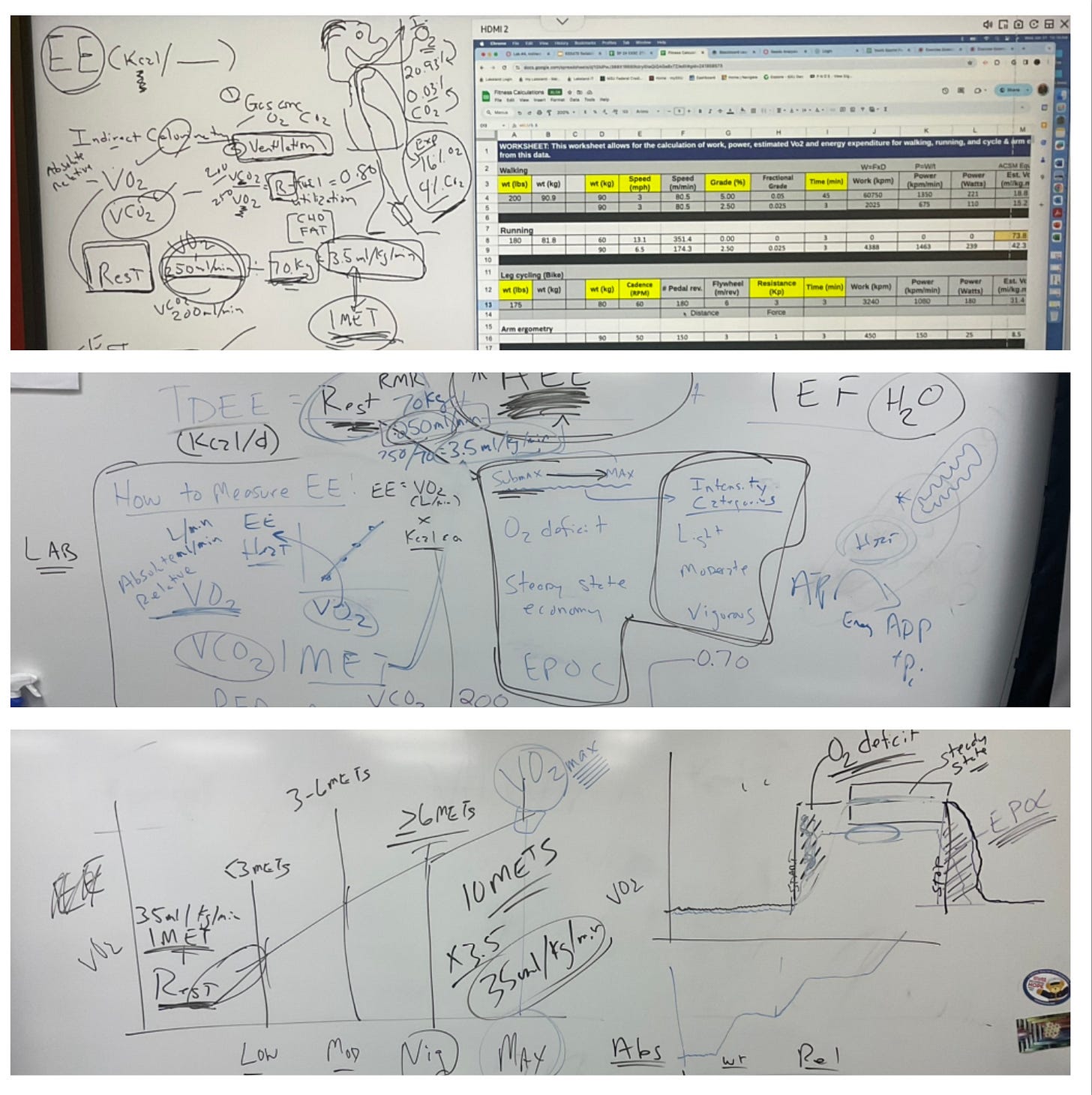Apologies for those following along to the usual cadence of 1-3 postings per month…. Spring 2024 has past by and the last posting was in early March. Quoting one of my all-time favorites, Ferris Bueller - "Life moves pretty fast. If you don't stop and look around once in a while, you could miss it".
Excuses and Spring Happenings
Besides being busy (if you aren’t busy something’s wrong ….), the reason - to be honest - that I did not post is because I just felt like I had nothing worthwhile to share. Although a few things that may be of interest that I will briefly note here and expand upon later are 1) pedagogical approaches in higher education and 2) recent academic writing.
Pedagogical approaches:
In the last 5+ years, I have started to take more interest in effective approaches to teaching at the university level. If you follow @Joe_Eisenmann on X, you have perhaps seen some of the “whiteboard sketches” which have largely replaced my Powerpoint slides. It seems that the research is pretty clear on didactic lectures - instructor/professor standing at front of the room and lecturing from Powerpoint slides - versus other “active” learning approaches. I only need to sit through a 45-50 minute faculty presentation to remind myself!
The approach that I have taken is a combination of flipped classroom and guided discovery learning (plus storytelling and analogy). Ideally, this requires the student to read and prepare prior to class …… ya, we have some work to do there…. But essentially, I have used the Learning Management System (Canvas) as the textbook/resource guide with Read | Watch | Listen options on the given topic (i.e., cardiovascular response to exercise, etc.). It is not just a place to house Powerpoint slides!
Once class begins, I am asking guiding questions to the students and whiteboarding / sketchnoting / concept mapping. The example below would be for a lesson on Whole-body Energy Expenditure. This includes teaching, questioning, discussion, etc. on indirect calorimetry, metabolic equations, assessment of resting and exercise energy expenditure, metabolic equivalents, fuel utilization, etc.
Stay tuned for a dedicated blog and/or video on this approach.
Recent and current academic writing projects:
Besides blogging for LTAD Network and 1080 Motion, a few exciting academic papers were/are in the works.
The first is a review paper - The development of fast, fit and fatigue resistant youth field and court sport athletes - accepted in a special issue of Pediatric Exercise Science to be published in conjunction with the Summer Olympics that focus on the Youth Athlete. In this paper, we highlight the recent excellent work from Gareth Sandford and others on the Locomotor Profile and Anaerobic Speed Reserve and relate it to testing and training the youth athlete. A major impetus for this paper was to introduce the pediatric exercise research community to contemporary approaches being used in the strength & conditioning / performance area. In addition, we review some historical data on sprinting and aerobic fitness along with the available data on ASR in youth. Overall, maximal sprinting speed (MSS), maximal aerobic speed (MAS) and ASR generally increase with age and across maturity groups and are also trainable. We conclude with the practical applications using principles of long-term athlete development for training the locomotor profile in youth field and court sport athletes.
The second piece is a chapter for the 3rd edition of Lloyd and Oliver’s Strength & Conditioning for Young Athletes book. I was asked to assemble a team of co-authors and write on Integrating Strength & Conditioning in Youth Sport Academies. Our team consists of James Baker, Kevin Till, & Des Ryan - representing several decades of experience in national governing bodies and academies. We are nearing the end and have decided to present the information as “A Step by Step Guide”. Here’s a sneak peek at the process:
Step 1: The Role Of National Governing Bodies In Supporting And Determining The Direction Of The Academy S&C Programme
Step 2: Getting The Right People On The Bus & Managing And Developing Them
Step 3: Organizational Considerations In Developing And Implementing An Academy Physical Development Strategy
Step 4: Conducting The Needs Analysis Of The Sport And Athlete
Step 5: Fitness Testing (And Monitoring)
Step 6: Program Design
Step 7: Considerations For Delivering S&C Programmes
Step 8: Program Evaluation And Research: Towards Evidence-Informed Practice
In mid-winter, I was asked by David Johnson, West Ham United Football Club, to co-author a review article focusing on providing recommendations to those who have this question - -”My kid is going through a growth spurt what should I do?” Over the past few years, David’s work on training load and injury during the adolescent growth spurt has gained nice attention (see here). I met David through his PhD mentor (and my good pal and colleague), Dr Sean Cumming, and was excited to be involved in this paper. Things are still coming together but we are covering the assessment and monitoring of growth & maturation and training load along with sections on the role of nutrition, psychology and strength & conditioning in preventing injury during the adolescent growth spurt.
So yes, busy as usual (if you are busy something’s wrong …) but not a good excuse for the two month void in posting here.
I’m enjoying the start of the summer, and looking forward to getting back on track with some worthwhile content here including sharing more insights into a few things herein. Thanks for following and reading.
From the shores of Lake Michigan -







